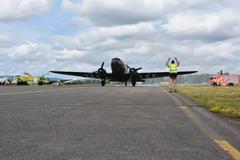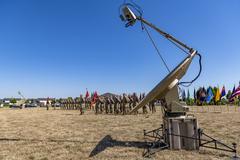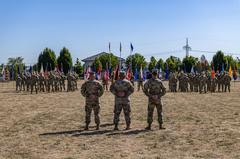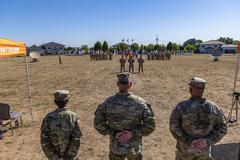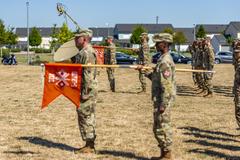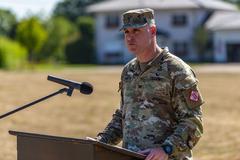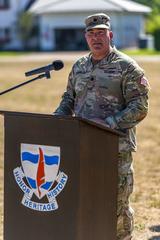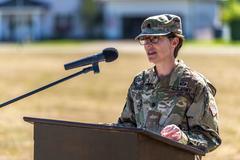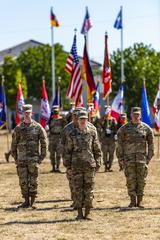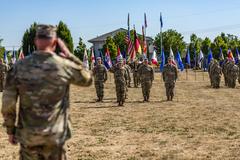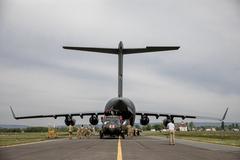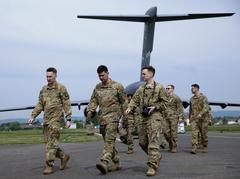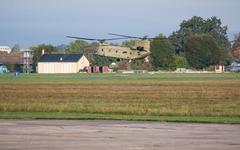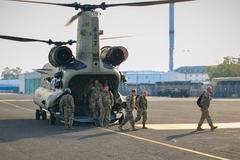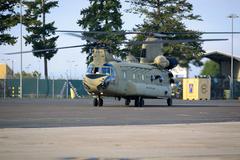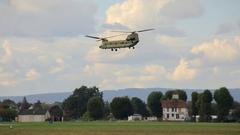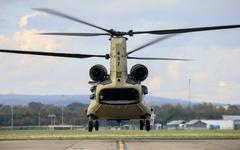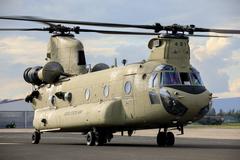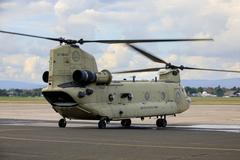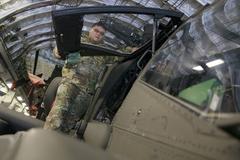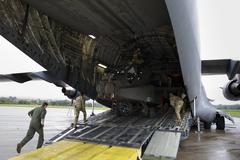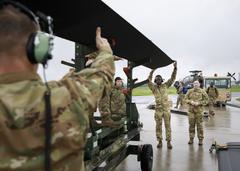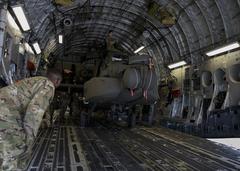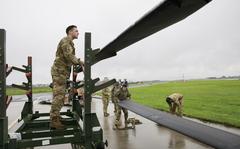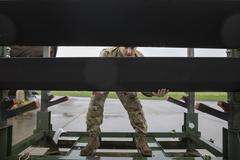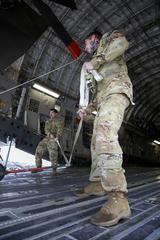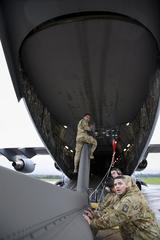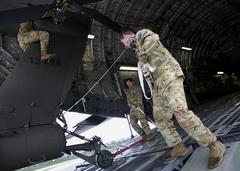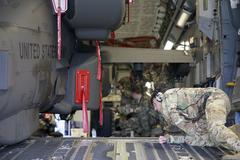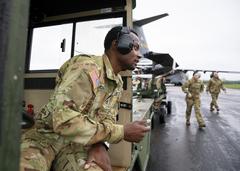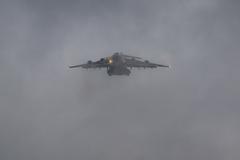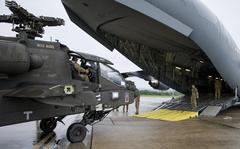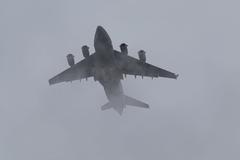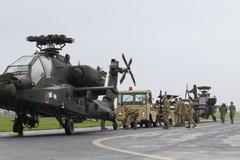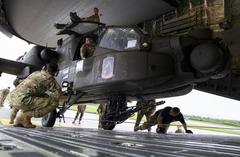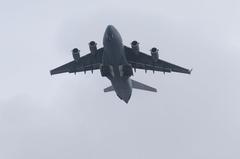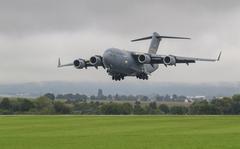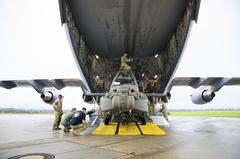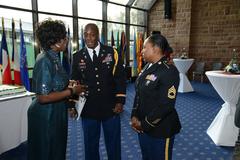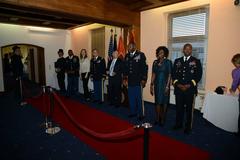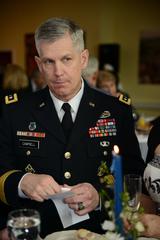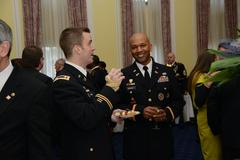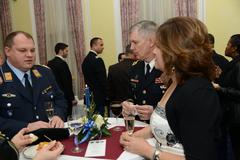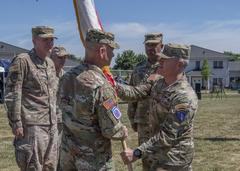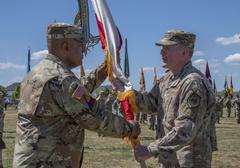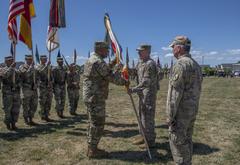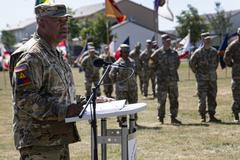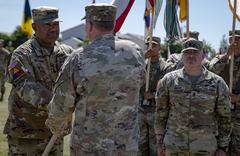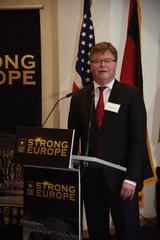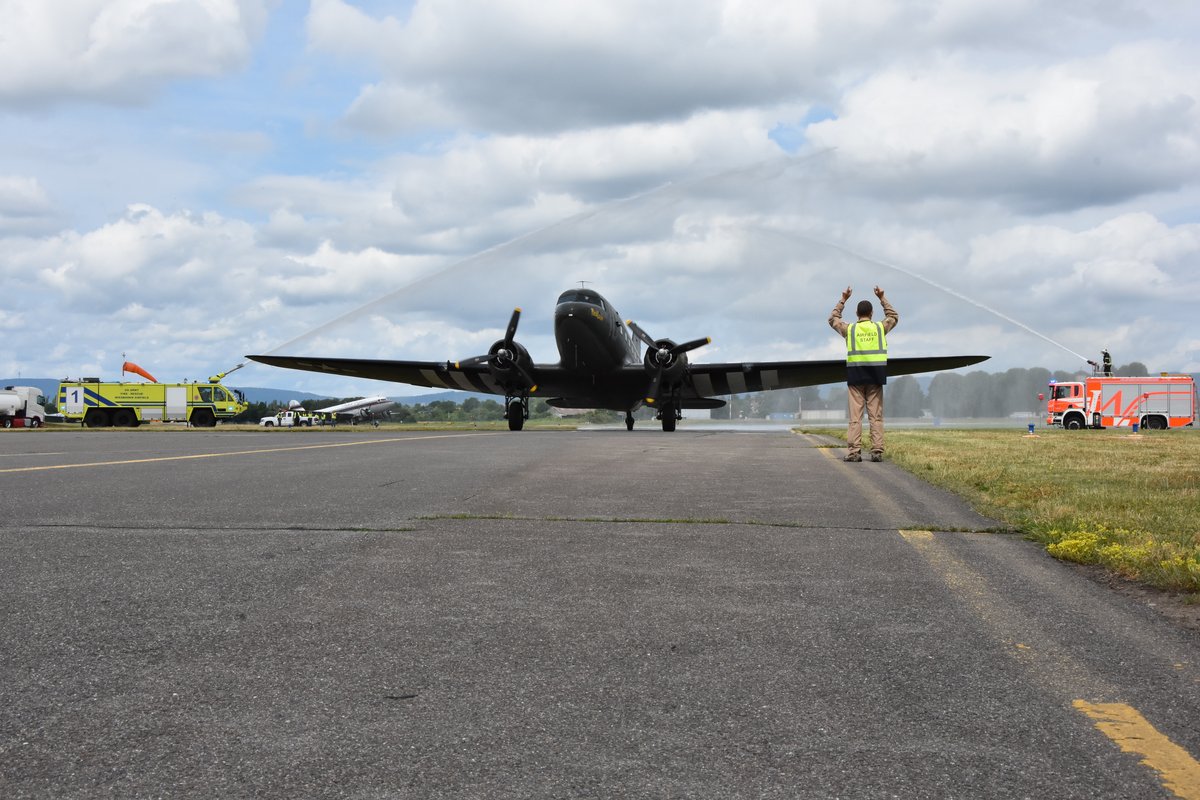
Lucius D. Clay Kaserne: Visiting Hours, Tickets, and Comprehensive Guide to Wiesbaden Historical Sites
Date: 14/06/2025
Introduction: The Significance of Lucius D. Clay Kaserne in Wiesbaden
Lucius D. Clay Kaserne, located in Wiesbaden-Erbenheim, Germany, stands as a testament to enduring German-American partnership and military history. Originally established as the Wiesbaden Army Airfield during the Allied occupation after World War II, it was later named in honor of General Lucius D. Clay—renowned for his leadership during the Berlin Airlift (1948–1949) and his pivotal role in the reconstruction of postwar Germany. Today, the Kaserne serves as the headquarters for U.S. Army Europe and Africa, supporting NATO operations and multinational cooperation efforts.
This guide provides detailed insights into the Kaserne’s history, its strategic and cultural importance, as well as practical visitor information—including access requirements, visiting hours, ticketing, and travel tips. It also highlights notable historical attractions in Wiesbaden, enriching the experience for visitors interested in the area’s heritage.
For official updates, guided tour information, and event schedules, consult resources such as the U.S. Army Europe website and USAG Wiesbaden official site.
Contents
- Introduction
- Historical Overview
- Origins and Early History
- The Berlin Airlift and Postwar Reconstruction
- Modernization and Community Development
- Strategic and Cultural Significance
- Practical Visitor Information
- Visiting Hours and Access Procedures
- Ticketing and Tours
- Transportation and Directions
- Facilities and Accessibility
- Nearby Attractions and Accommodation
- Annual Events and Cultural Exchange
- FAQs
- Conclusion
- Sources
Historical Overview
Origins and Early History
The site of Lucius D. Clay Kaserne began as a horse racetrack in 1910, later transformed into an airfield in 1929. It was used by the German Luftwaffe from 1935, serving as a base for Jagdgeschwader 53 during World War II. After the U.S. 80th Infantry Division took Wiesbaden in 1945, the area became known as U.S. Army Airfield “Y-80,” and soon after, Wiesbaden Army Airfield (mil-airfields.de).
The Berlin Airlift and Postwar Reconstruction
The Kaserne achieved international prominence during the Berlin Airlift, orchestrated by General Lucius D. Clay. From 1948 to 1949, the airfield was a key launching point for round-the-clock flights supplying West Berlin during the Soviet blockade—a defining episode of the early Cold War. The renaming of the installation in 2012 further cemented Clay’s legacy as the “father of a free West Germany” (army.mil article).
Modernization and Community Development
Following decades of service as a U.S. Air Force base, control of the installation transitioned to the U.S. Army in 1976, and it has since evolved into a modern military hub. The early 21st-century saw significant upgrades, including the construction of the General John Shalikashvili Mission Command Center and the sustainable Newman Village residential area. Archaeological excavations during these projects revealed Roman and Celtic artifacts, reflecting Wiesbaden’s deep historical roots.
Strategic and Cultural Significance
Lucius D. Clay Kaserne is a cornerstone of U.S. and NATO military operations in Europe and Africa, hosting commands like V Corps, the Security Assistance Group–Ukraine, and the 7th Army Training Command. The base’s Consolidated Intelligence Center and 66th Military Intelligence Brigade further underscore its importance.
Beyond its military role, the Kaserne is integral to the local economy and cultural life, supporting over 56,000 people in the Wiesbaden region. Community events, such as the German-American Friendship Fest, foster meaningful cultural exchange and reinforce the strong bond between American personnel and local residents (govserv.org).
Practical Visitor Information
Visiting Hours and Access Procedures
As an active U.S. military installation, Lucius D. Clay Kaserne has restricted public access, with no regular open hours for casual visitors. Access is generally permitted only during special events, commemorations, or official group visits, all of which require advance registration and adherence to security protocols. For up-to-date information on public events and access, check the USAG Wiesbaden website or event-specific portals like Wiesbaden lebt.
Entry Requirements:
- Advance registration (when applicable) via official event platforms
- Valid government-issued photo ID (passport or national ID)
- Entry typically through the main gate only
- Security checks including bag searches and metal detectors
Note: Private vehicles are generally not permitted during public events; visitors must use designated shuttle services or public transit.
Ticketing and Tours
- Tickets: For major events, free tickets are distributed in limited quantities via official online portals (e.g., Land Hessen portal).
- Guided Tours: These may be available for official groups, delegations, or during open days. Advance booking is required; contact the Public Affairs Office or Visitor Center for details (Visitor Center Info).
Transportation and Directions
- Public Transport: The RB21 train runs between Wiesbaden Hauptbahnhof and Wiesbaden-Erbenheim Bahnhof; buses 5, 15, and 28 serve the area.
- Event Shuttles: During large events, use shuttle services from Park-and-Ride locations like Abraham-Lincoln-Straße (wiesbaden-lebt.de).
- Directions: From Wiesbaden Hauptbahnhof, take the RB21 train or local buses to Wiesbaden-Erbenheim, then follow signs to the main gate. Cycling and walking routes are also available.
- Real-time transit: Check the Moovit app for schedules.
Facilities and Accessibility
- Restrooms: Portable and permanent options available during events
- Food: American and German cuisine sold on-site, including popular burgers (wiesbaden-lebt.de)
- Seating: Limited; bringing your own folding chair or blanket is recommended
- Accessibility: Facilities are mostly accessible for those with mobility needs; inquire for specific accommodations
- Wi-Fi: Free Wi-Fi may be available during large events, but coverage varies
Nearby Attractions and Accommodation
- Wiesbaden City Center: Famous for neoclassical architecture, thermal spas, museums, parks, and vibrant shopping
- Heimatmuseum Erbenheim: Local history museum
- Pauluskirche: Historic church in proximity
- Hotels: Convenient options include Pentahotel Wiesbaden, Arona Hotel Frankfurt Rüsselsheim, Courtyard by Marriott Wiesbaden-Nordenstadt, and tinyTwice Hotel Wiesbaden (booking.com)
Use public transport for regional travel; consult the Moovit app for guidance.
Annual Events and Cultural Exchange
Lucius D. Clay Kaserne hosts annual commemorative events, such as the Berlin Airlift anniversary, U.S. Army birthday celebrations, and the German-American Friendship Fest. These occasions offer unique opportunities for civilian visitors to experience the base’s heritage and participate in cultural exchanges, with bilingual signage and programming.
Community engagement is further strengthened through educational programs, recreational activities via MWR, and joint German-American festivals (govserv.org).
Frequently Asked Questions (FAQ)
Q: What are the visiting hours for Lucius D. Clay Kaserne?
A: There are no regular public visiting hours; access is limited to special events or by prior arrangement. Check official channels for event-specific schedules.
Q: How can I obtain tickets?
A: For major public events, tickets are free but must be reserved in advance through official registration platforms.
Q: Can I bring my car?
A: Private vehicles are generally not allowed during events; use public transit or designated shuttles.
Q: Is the base accessible for people with disabilities?
A: Yes, most facilities are accessible; check event details or contact the Visitor Center for assistance.
Q: Can I take photos?
A: Photography is permitted in most public event areas but may be restricted near sensitive zones. Always follow posted signs and staff directives.
Conclusion
Lucius D. Clay Kaserne is more than a military base; it is a living monument to German-American cooperation, resilience, and shared history. While public access is restricted, special events and commemorative occasions offer unique opportunities to explore this historic site. Complement your visit by exploring Wiesbaden’s rich array of cultural and historical attractions.
For current visiting hours, ticket information, and event updates, always consult official resources like the U.S. Army Europe website, USAG Wiesbaden, and Wiesbaden Events Portal.
Enhance your experience with the Audiala app for audio guides, interactive tours, and insider tips. Stay connected through official social media channels for the latest news and visitor insights.
Sources and Official Links
- Lucius D. Clay Kaserne in Wiesbaden: History, Visitor Information, and Key Attractions, 2024, U.S. Army Europe (army.mil article)
- Visiting Lucius D. Clay Kaserne: History, Tours, and Wiesbaden’s Top Historical Site, 2024, USAG Wiesbaden (home.army.mil/wiesbaden)
- Lucius D. Clay Kaserne Visiting Hours, Tickets, and Visitor Guide in Wiesbaden, 2024, Wiesbaden Events Portal (wiesbaden-lebt.de)
- Visiting Lucius D. Clay Kaserne in Wiesbaden: Historical Significance, Practical Tips, and Cultural Insights, 2024, GovServ and Mil-Airfields (mil-airfields.de) (govserv.org)
- Moovit Public Transit Guide (Moovit App)
- Booking accommodation in Wiesbaden (booking.com)
- Lucius D. Clay Kaserne Visitor Center (Wanderlog)
